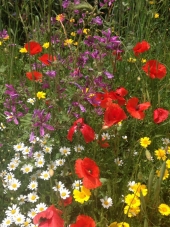
 4
4




Standing on the shoulders of giants. Giants with dirt under their nails





Hans Albert Quistorff, LMT projects on permies Hans Massage Qberry Farm magnet therapy gmail hquistorff




Standing on the shoulders of giants. Giants with dirt under their nails




Tj Jefferson wrote:(reference the tree tubes).
Idle dreamer




Standing on the shoulders of giants. Giants with dirt under their nails




Idle dreamer
 1
1




Standing on the shoulders of giants. Giants with dirt under their nails




Standing on the shoulders of giants. Giants with dirt under their nails




Tj Jefferson wrote:We considered it, but at this point I am the main (read only outdoor) labor and I work a week on week off several times a year. So having any tractor-based livestock on this schedule is a non-starter.
The idea is that eventually I can have a sheep prison for the times I am at work (which would be approx 3 acres of pretty good sheep forage) with a watering system. Then when I am not at work I can have the sheep paroled into mobile electric fence paddocks in the new silvopasture (reference the tree tubes). We are not going to max out the carrying capacity because it will be based on the sheep prison alone. If I can get accomplices in this, I may have a similar setup for poultry, but we have a big fox population so the paddocks seem unlikely to be effective.
For right now the idea is NOT to strip the current vegetation, just add biomass and some new perennial species and be ready for the herbivores next year.
 1
1




Standing on the shoulders of giants. Giants with dirt under their nails




Standing on the shoulders of giants. Giants with dirt under their nails




Standing on the shoulders of giants. Giants with dirt under their nails







 1
1




Hans Albert Quistorff, LMT projects on permies Hans Massage Qberry Farm magnet therapy gmail hquistorff
 3
3




Standing on the shoulders of giants. Giants with dirt under their nails
 2
2




Hans Quistorff wrote:I had good results in my sparse areas by spreading ashes from the wood stove. Mowed the vetch after it dried in late summer which distributed the seed. That combination has deepened the root mass this spring.
May has been warmer and dryer than usual this year so grasses are forming seed heads earlier and shorter than usual.
Standing on the shoulders of giants. Giants with dirt under their nails

|
I am not a spy. Definitely. Definitely not a spy. Not me. No way. But this tiny ad ...
montana community seeking 20 people who are gardeners or want to be gardeners
https://permies.com/t/359868/montana-community-seeking-people-gardeners
|




